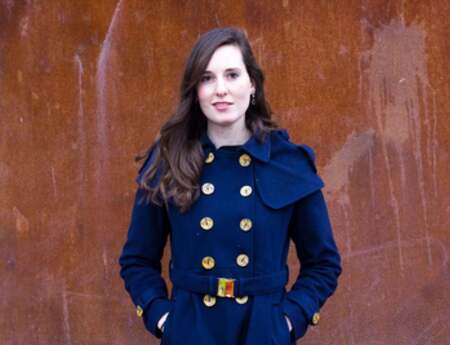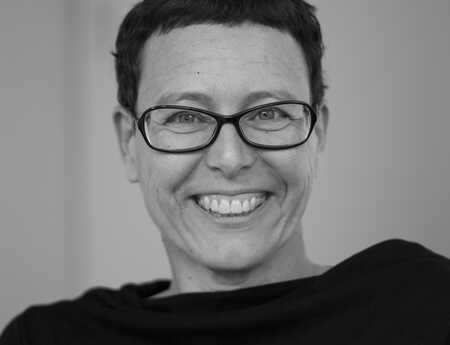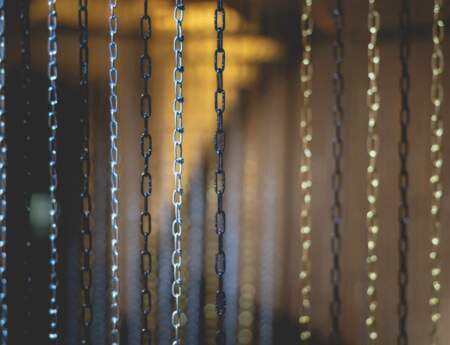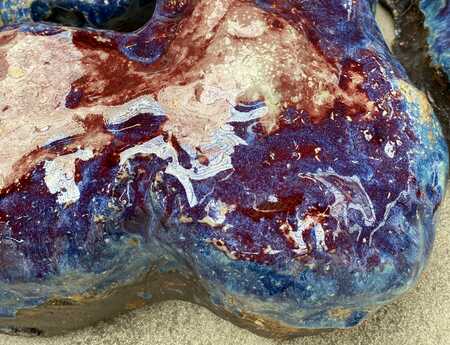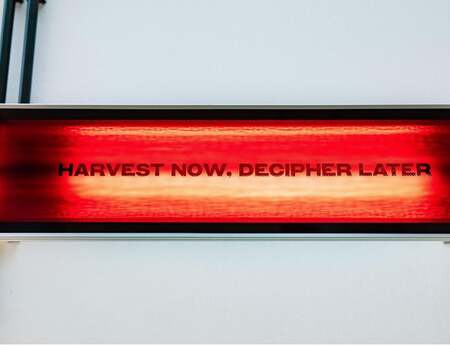Pearly Oil: Monira Al Qadiri’s Art on “Petro-Culture”
There is a certain irony to small dinosaur toys as the plastic material they are made of are partly the remnants of the ancient creatures they represent. Kuwaiti artist Monira Al Qadiri, based in Berlin, takes this irony a step further with her installation "Seismic Songs" (2022) that was on exhibit with her other works at König Galerie in Berlin.
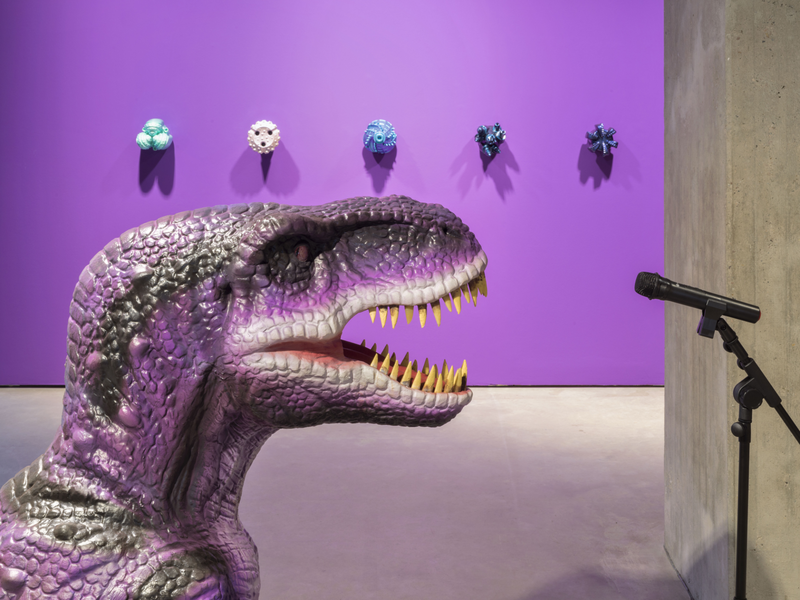
We see a sculpture of a giant purple dinosaur sitting in front of a microphone singing karaoke with an auto-tuned voice. With this work Al Qadiri is referring to the seismic graph surveys, with which the oil industry sends sound waves into the earth in order to find pockets of oil. Later on the technology of the seismic graph was developed into the famous “auto-tune” which is now broadly used in the music industry. Qadiri merges auto-tune and the seismic graph back together as the words “Find me! Please find me! I need your love!” appear on the screen. The lonely dinosaur is calling to us and thus the oil industry to be found. This makes it humorous as well as a tragic piece of art, like a drug that is calling to an addict.
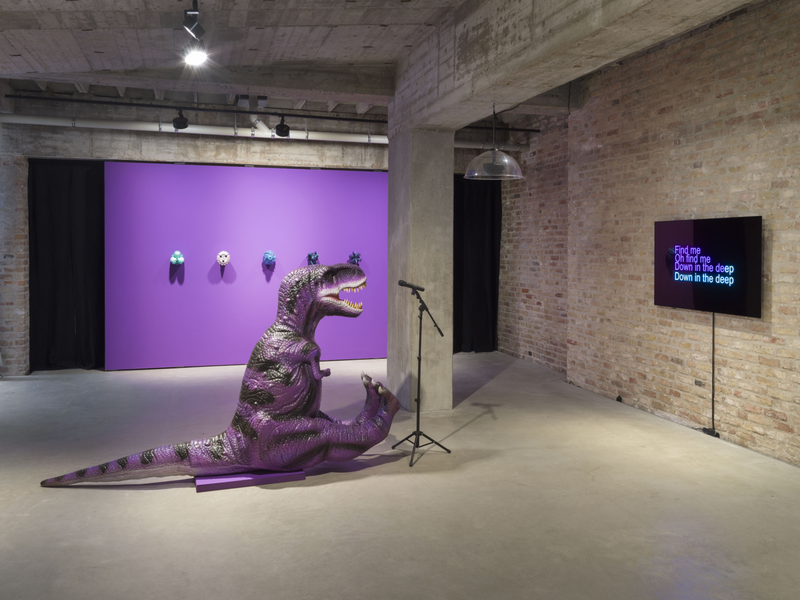
Al Qadiri plays with the push and pull of oil in her body of work. We all know that fossil fuel is rapidly destroying our planet, still oil is so intricately woven into our modern day lives that it seems too hard to quit. As inspiration she takes the “petro-culture” in her home country Kuwait. The main industry is securely hidden from public view but has provided extreme wealth to the nation and its citizens. In various works Al Qadiri connects oil to the industry the Gulf region was previously dependent on, the pearl trade, by alluding to the similar iridescent color. The pearly color of oil is beautiful to the eye while the substance itself is toxic. Al Qadiri made several pearly oil colored sculptures signifying a new generation in her country dependent on the oil industry.
The work Spectrum (2006) for example contains six sculptural objects based on the heads of oil drills that are colored in this manner. They are hardly recognizable as oil drills because of their weird alien shapes. Because the oil industry is huge it has amassed thousands of different designs of oil drill heads for each type of location. They even remind us of the sea creatures you find at the bottom of the ocean floor. Again, there is a tragic irony that the tools are so similar to these animals whose fragile ecosystems we are destroying with these tools.
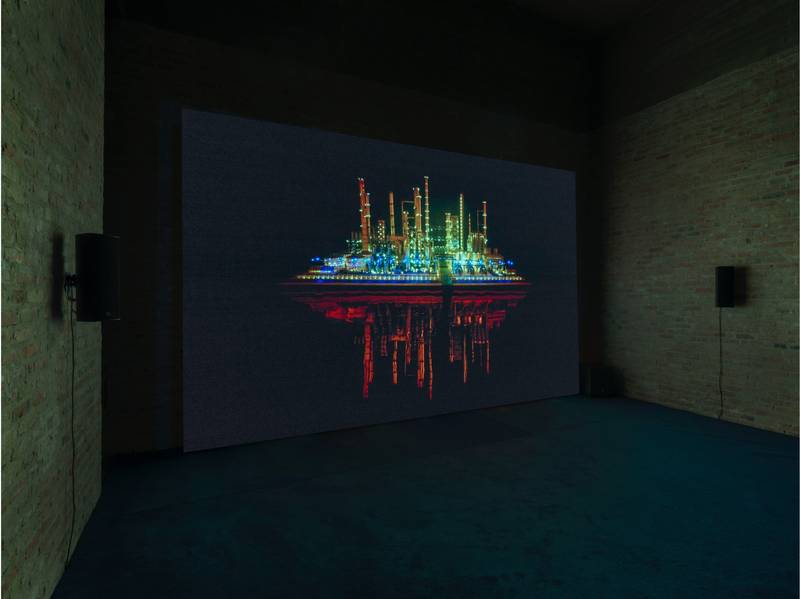
In the videowork Crude Eye (2022) Al Qadiri reflects on one of the vistas of her childhood in Kuwait, the oil refinery. As oil refineries are heavily guarded and taking any kind of photography is forbidden, Al Qadiri built a model in her artist studio. We are lead through her installation showing this mysterious place full of tubes, chimney’s and lights. On the one hand the miniature oil refinery looks like a magic carnival where the show can start any minute, on the other hand it is a haunting desolate construction in the middle of nowhere. Again, Al Qadiri turns our eye to our ambiguous feelings; the construction is mesmerizing, even though we know it pollutes the earth.
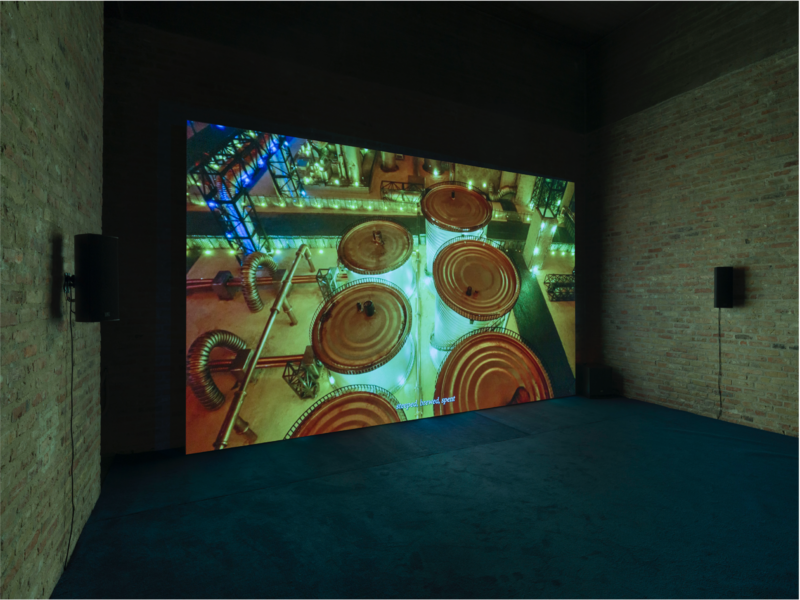
However, Al Qadiri isn’t afraid to confront the spectator with the destructive power the oil industry has. In her work Onus (2023) birds soaked in oil are lying lifeless on the floor of the exhibition space. It is another image of Al Qadiri’s childhood memories of Kuwait: after one of the worst man-made environmental disasters created during the Gulf War (1990-91) the coastline and desert were lined with carcasses of species drenched in oil. Al Qadiri learned later on when she was studying in Japan that the apocalyptic photographs of the oil birds that crossed over the world were being called into question. One of her teachers claimed that the picture of birds covered in oil were merely propaganda. This called her own experience into question and made her doubt her own childhood memories.
With this artwork Al Qadiri recreates the horrific landscape and reclaims the images of the catastrophe by giving it a cold beauty. The birds are cast in glass, a material both transparent and strong. But by soaking them in black oily liquid they lose their transparency, just like the oil industry tries to cover up the truth. Also, glass is fragile, it can easily be shattered just as nature can easily be destroyed by human hands. The powerlessness we feel when seeing these awful images can make us want to believe in conspiracies, but with her artwork Al Qadiri lays bare the truth of the destructive consequences of oil in front of our eyes without any sugar coating.

